Embracing the new revolution: How to effectively teach with technology
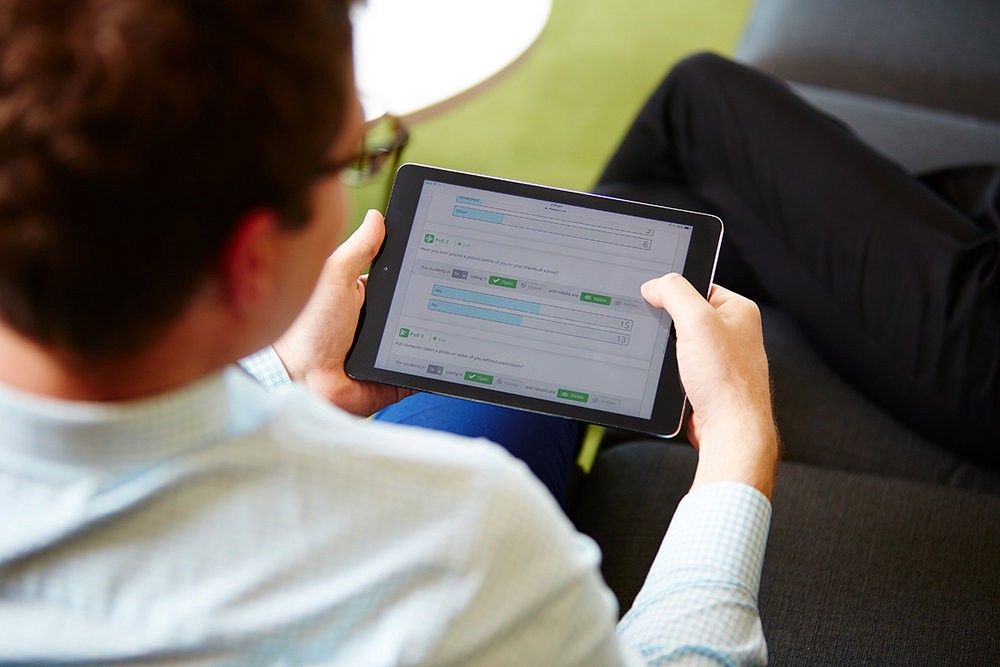
The iPad was invented in 2010 which seems incredibly recent (I would have guessed much earlier), yet only in the last few years has the impact of technology really been felt in education. Early adopters of technology in education started with computer rooms, and the overhead projector was quickly phased out by data projectors, interactive whiteboards and TVs. This certainly changed how we presented content and information to students, but it is only in the last few years that technology access for every student is gradually becoming the norm.
In my role as Community Leader for Stile Education in Queensland, I visit many schools with vast variations in their methods of accessing technology and what technology is available to their students. From one-to-one school supplied laptops to some flavour of Bring Your Own Device (BYOD/X/T or some other acronym!), to iPad schools or letting students use phones, the one common theme is that technology is now (or aims to be) in every classroom, in every lesson, with every student.

The computer rooms of old are being phased out by the idea that you shouldn’t need to go somewhere to use technology — technology should be readily available to use in the classroom in all subjects and not just reserved for ICT classes or the odd lesson here and there, assuming you can book a time to get into the computer room!
This change is quick and can be scary. It is fraught with many issues but ultimately the use of technology in the classroom is hard to argue against and in reality, it’s inevitable. If we as teachers are to prepare our students for life in the ‘real world’, then an ability to use technology in their everyday lives is essential. Whether you like it or not (and I can assure you that you’re not alone if you don’t like this new revolution), technology is here to stay and will increasingly become part of your day to day job.
If you’re a teacher who loves technology and are quick to embrace anything new, you have a real advantage in this ever tech-increasing world of education. But there’s a big difference between how a program or app functions and how to practically use and apply those programs or apps in your day-to-day teaching. You may have the tools, but do you know how to use them?
What technology shouldn’t be
There is a school of thought suggesting that technology is creating lazy teaching, and certainly, there is a danger of this. Many programs lend themselves to a ‘set and forget’ mentality where the teachers assign work and their students simply get on with the exercise and receive answers at the end. I’m all for independent learning and reducing teacher time in planning, and this method certainly has its place but if that’s all technology is being used for, it’s a disservice to the students.
There always needs to be an element of reflection or consolidation for work that the students complete using technology because if this isn’t the case, it can become meaningless for the students if they are doing things their teacher appears not to care about.
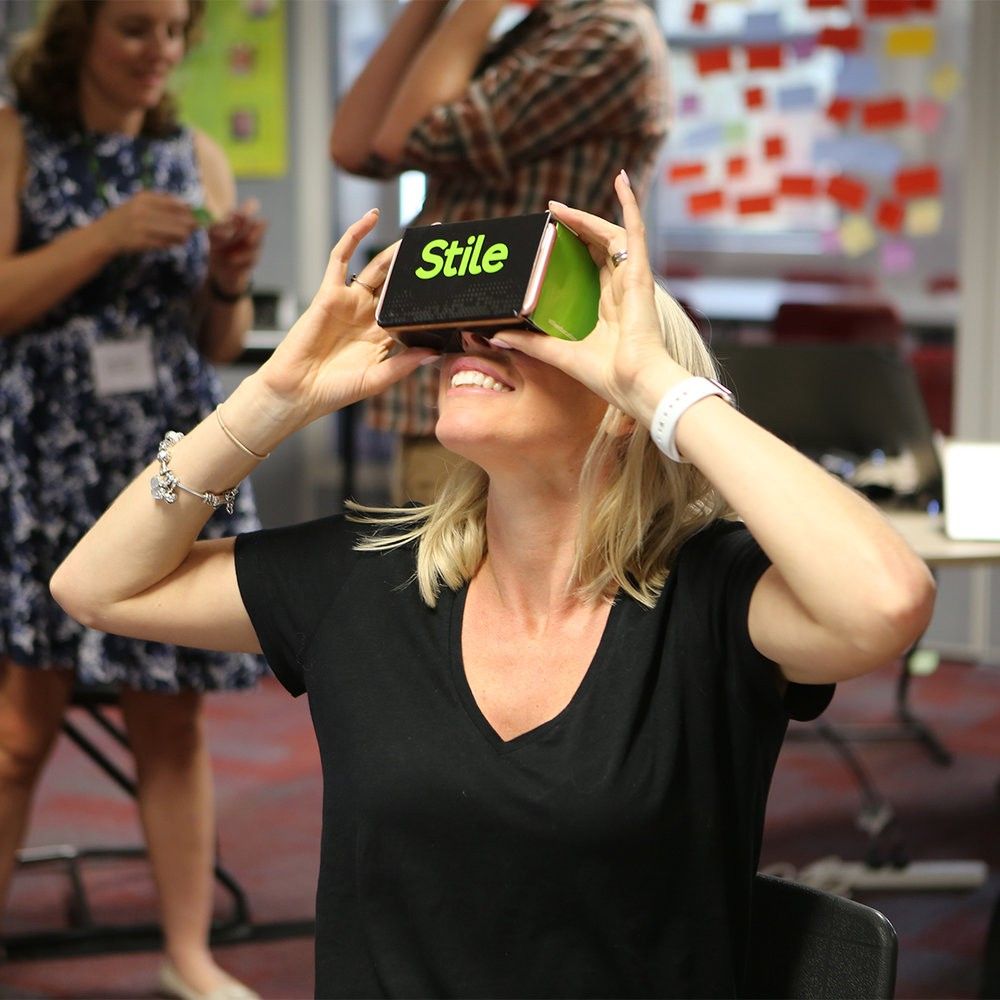
There’s also the thought that technology can replace books verbatim, and function in the same way. Aside from this being a waste of the power of technology, if it’s a straight swap for a physical textbook to a pdf on a screen, the benefits are little, if any. And no book has ever ran out of batteries so the temptation to simply use technology as a reading device is a waste.
To only use technology as a ‘Googling’ machine is also wasteful in terms of time and resources and does not maximise the power of technology. And to assume that students don’t need a base knowledge of information for a subject because they can Google it, is not correct. Ultimately, you need content from which you can then produce and relate ideas (Hattie 2018).
Finally, on what technology shouldn’t be is that it should never be the only thing you do, and the only thing you use. Variation in all of your teaching is key because different strategies will be relevant at different stages of learning. To use technology all the time for every lesson is not a good use of technology.
What technology should be
It seems obvious to say but technology should be a tool to help in your teaching and learning. Programs or apps should save you time, should engage students, should be relevant and should be useful. Ideally, they should fit seamlessly into what you’re already doing although it may require a shift in pedagogy to ensure effectiveness.
Programs should be reliable, regardless of the device used by the students. This is a big thing as time is the enemy of the teacher. If you plan a lesson with technology and that technology fails you, the time wasted and learning potential lost is infuriating.
It should be educationally rigorous and easy to use. No one should have to be an IT teacher in order to use an app or program in the classroom. And it should do things no book ever could like involve engaging simulations, give feedback, provide insights for teachers and give more transparency and clarity to teaching and learning.
So assuming all of the above, and assuming you’ve chosen a program to use that works for you, how do you then teach effectively using that program?
The problem for teachers
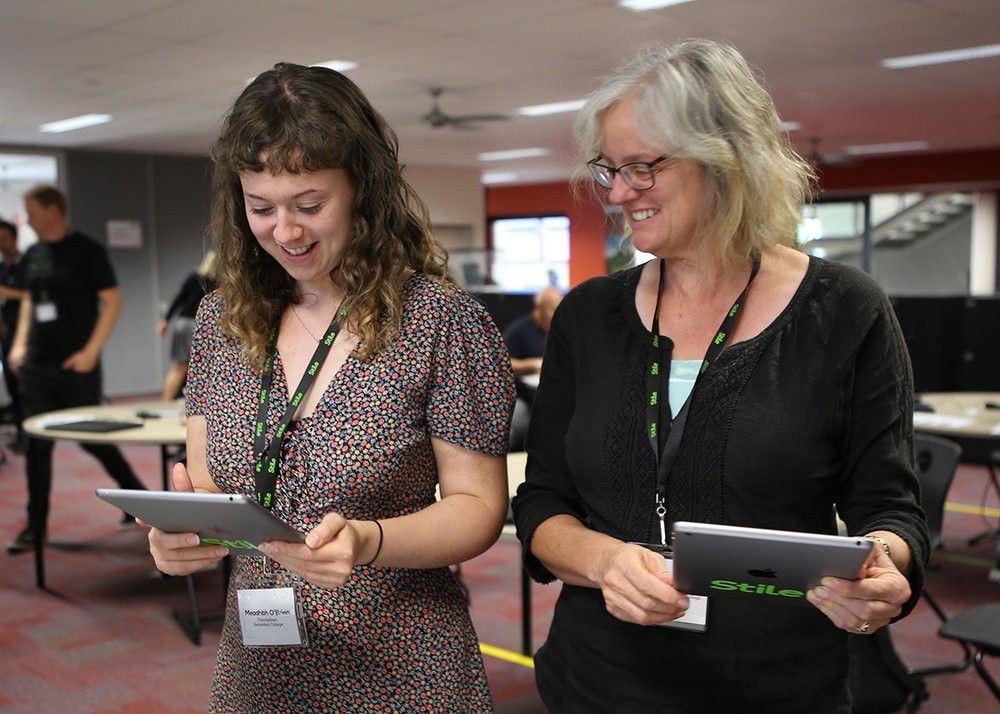
When I was at university studying a double degree in science and teaching, students using technology simply wasn’t a thing in the classrooms. My first teaching position had me using a roll-around chalkboard and if I was lucky, chalk of varying colours! How times have changed.
Even recently graduated teachers would find their knowledge of teaching with technology out of date by now, given the speed of change in the current climate. Whether you’re an early adopter school and have had computers or other technology for a few years, or whether you’re just embarking on a BYOD program, there’s no denying we’re at a fundamental change in education and one at which we are figuring out as we go.
Teaching is a collection of skills and abilities which, when applied correctly can have huge impacts on student learning. From direct instruction, facilitating discussions to hands-off guidance allowing independent or collaborative learning, employing various tactics at the right time is key to effective teaching and learning. Therefore, integrating these pedagogies with technology is the key to successful teaching and is essential in preparing students for the future.
SOLO Taxonomy
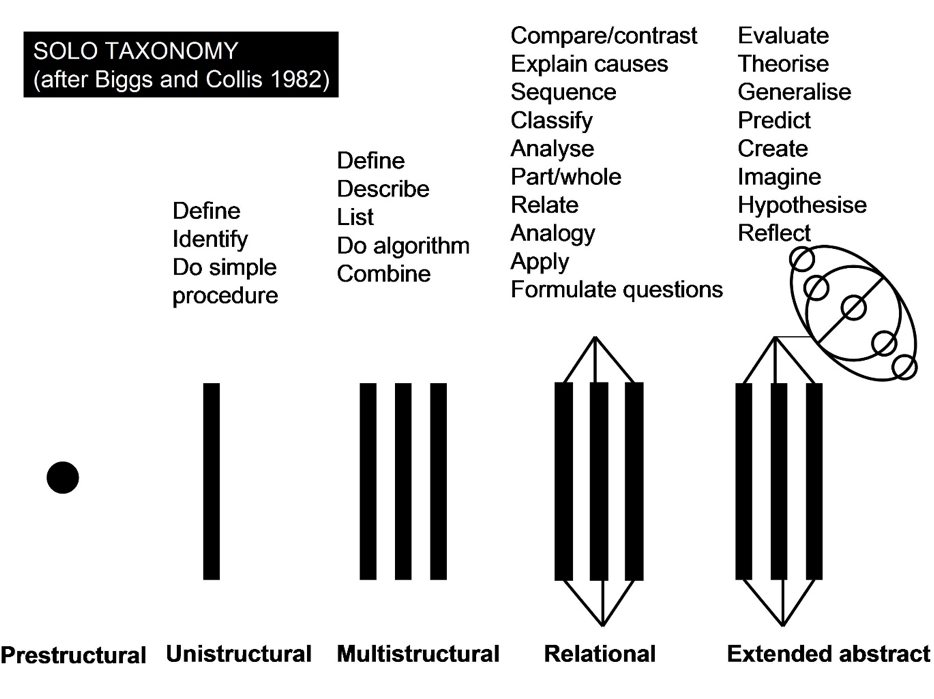
In 1986 Biggs and Collins came up with a structure of learning outcomes called SOLO (Structure of Observed Learning Outcomes) Taxonomy. SOLO Taxonomy has gained popularity and has been adopted by John Hattie and others and applied to the understanding of surface learning, deep learning and the transfer of understanding to other areas of learning, which is key when talking about which teaching strategies to use when teaching with technology.
The structure of SOLO Taxonomy has 5 levels, moving from students having no knowledge, to gaining knowledge in a unistructural or multistructural way which reflects surface learning. This is a gathering of terms, definitions and facts about a concept for a fundamental understanding and a foundation from which to build upon.
From this foundation, ideas can then be created and applied in the relational and eventually extended abstract levels which is where deep learning occurs, and ultimately the transfer of understanding to other, often unrelated areas.
Although the idea is to move from surface learning, to deep learning and ultimately to transfer learning, the process isn’t linear because even in the deep learning areas, surface learning is still required. Ultimately, if you can determine where your students are in the SOLO Taxonomy model, you can modify your teaching to enable students to progress from one stage to the next.
“Teaching students how to learn is as important as teaching them content, because acquiring both the right learning strategies and background knowledge is important — if not essential — for promoting lifelong learning.”
— John Dunlosky, Kent State University Professor of Psychology
According to research by Hattie and others, more than 90% of ‘testing’ in schools relies on surface knowledge, but for students to be employable and to be able to apply their learning to everyday life, deep learning and the ability to transfer skills and understanding is essential. Knowledge and basic information of a concept is a necessary foundation for moving onto deep learning but it can’t be the only function and outcome of education.
Let’s be honest (and as sad as it is to think about), students will forget the vast majority of the content you’ll ever teach them but if they can analyse, apply, formulate questions, hypothesise, imagine and reflect; you’ve armed them with lifelong skills. It’s about teaching them how to think, not what to think.
An example of SOLO Taxonomy questions whilst utilising technology
When planning lessons, think about the key verbs associated with SOLO Taxonomy at each stage and what questions apply, and then consider how these could be used in conjunction with technology. I will provide examples of each question type from Stile Education’s latest Cells unit for Year 8 to show how these questions can be presented through technology. Bear in mind that it isn’t so much the question type that matches each SOLO stage (multiple choice, short answer, cloze etc.), but the question content. You can have deep learning, extended abstract multiple-choice questions, although they’re much harder to write!
Unistructural: Surface Learning
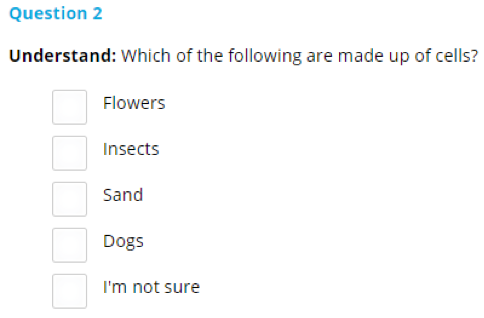
This requires the students to understand one concept: that living things are made up of cells.

